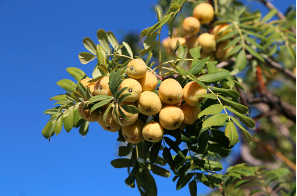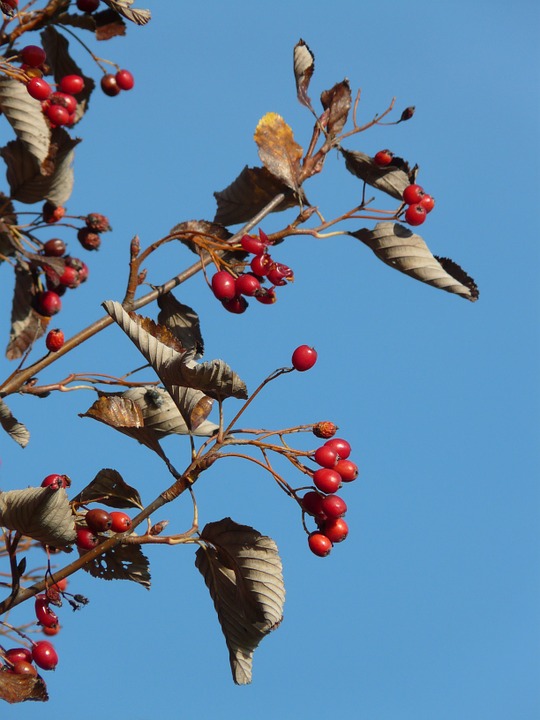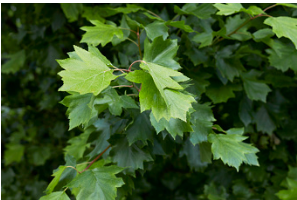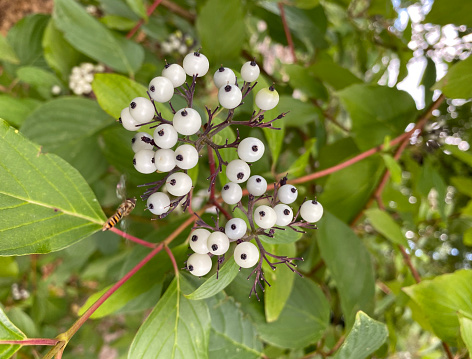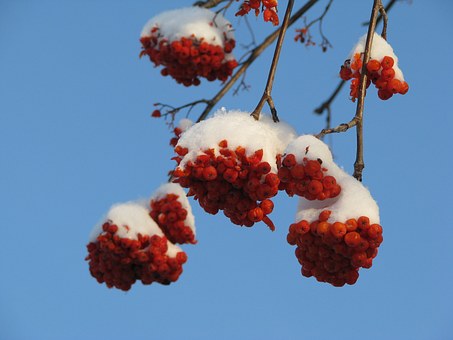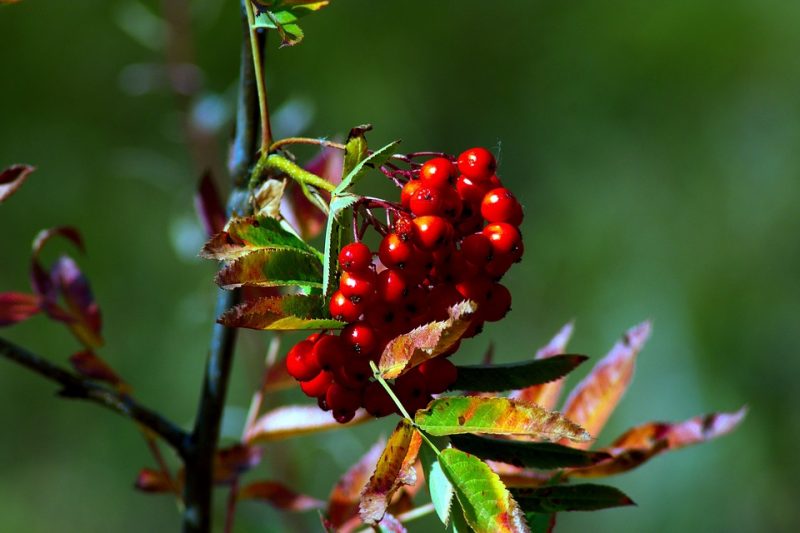Rowan, planting guide and care work
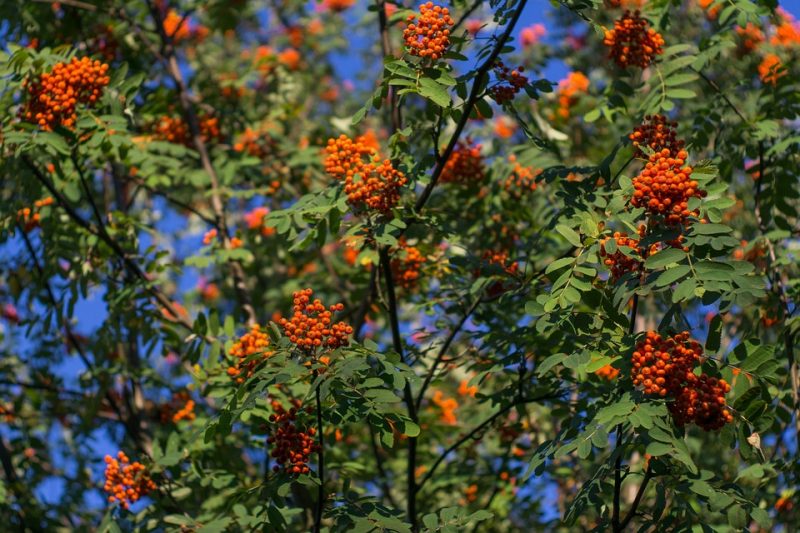
Rowan belongs to the Rosaceae family and the genus Sorbus, which includes trees and shrub species. The ornamental value of the Rowan species is due to the flowers clustered in multi-flower corymbs, to the brightly colored fruits: red, orange, yellow, brown, respectively to the simple or imparipinnate-compound leaves.
Species and varieties
Some of the best-known species of Rowan are Sorbus aucuparia, Sorbus domestica, Sorbus aria, and Sorbus torminalis. In the spontaneous and cultivated flora, we can find many varieties, hybrid species, and non-native species.
Sorbus aucuparia (rowan, mountain-ash)
A shrub or a tree up to 10-18 m tall, usually with a straight stem and a sparse, spherical crown. It grows especially in the mountains. It has imparipinnate-compound leaves: with 9-17 elongated leaflets, each 4-5 cm long. In the autumn, before they fall, they turn dark red. The flowers are white, straight, upwards-oriented, and the fruits are small, approx. 1 cm long, spherical, red. They remain attached to the crown until the middle of winter.
Varieties:
- Sorbus aucuparia var. lanuginosa – with hairy leaves;
- Sorbus aucuparia var. glabrous – with glabrous leaves and tendrils from a young age;
- Sorbus aucuparia var. dulcis – with larger edible fruits;
- Sorbus aucuparia var. xanthocarpa – with yellow-orange fruits;
- Sorbus aucuparia var. fastigiata – with a conical crown.
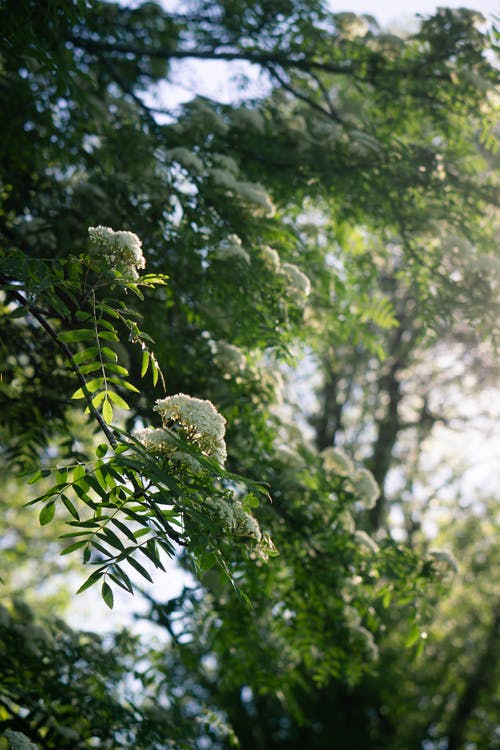
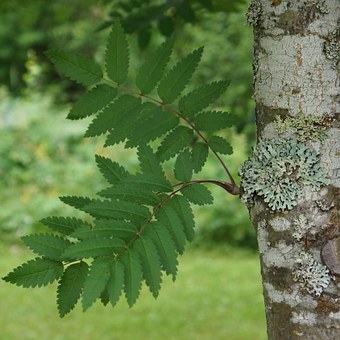
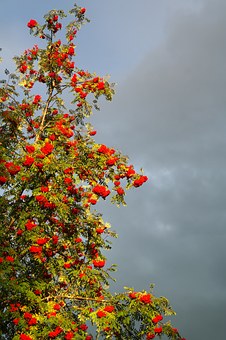
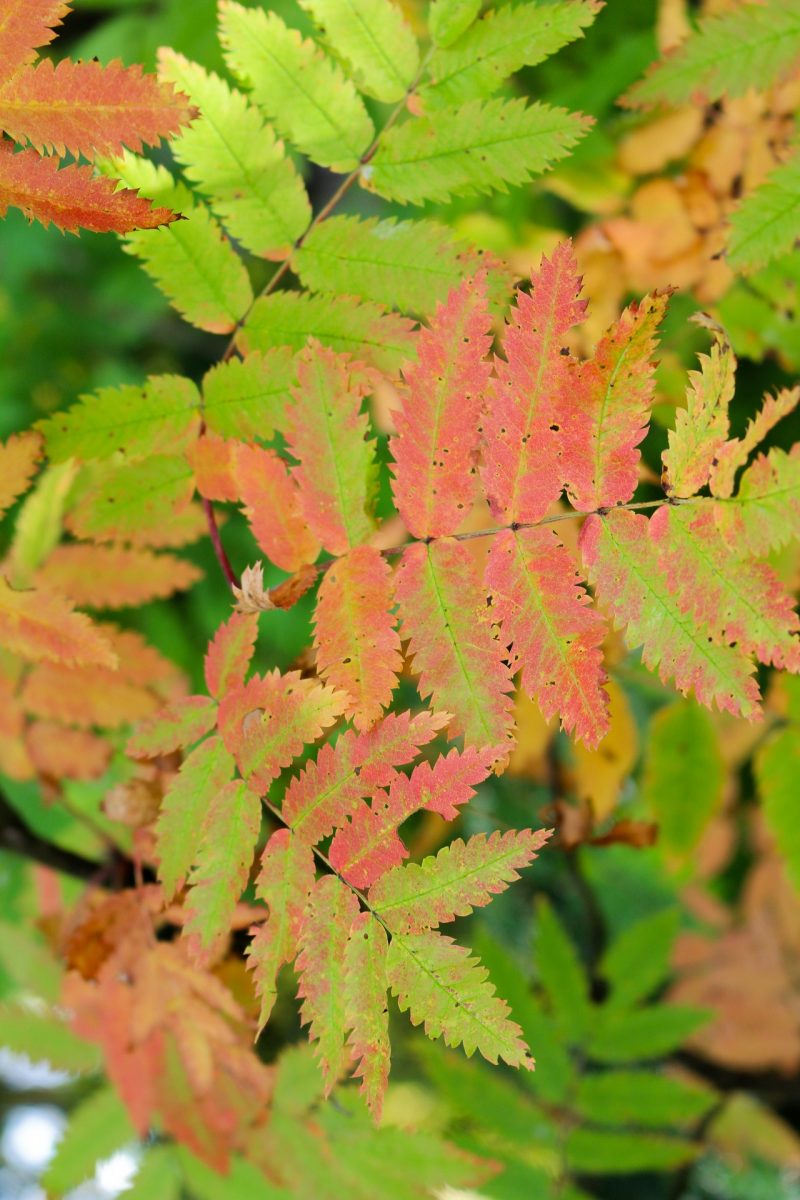
Sorbus domestica (service tree, sorb tree)
A tree with maximum heights of 15-20 m, sporadically found in spontaneous flora but cultivated for its edible fruits. It is recognized thanks to the imparipinnate-compound leaves, with 13-21 leaflets and with a hairy, whitish rachis (leaf axis). It has white or pink flowers, 1.5-3 cm long, greenish, brown, or a combination of them.
Varieties:
- Sorbus domestica var. moliformis – with spherical fruits, similar to apples;
- Sorbus domestica var. piriformis – with elongated fruits, similar to pears.
Sorbus aria (whitebeam)
A 10-12 m tall tree or shrub with special ornamental importance, due to the discolorous foliage (whitish-tomentose leaves on the underside, while on the upper face they are tomentose only in the beginning) and to the red-orange fruits. The leaves are simple, large, 5-12 cm long, with a short petiole (approx. 2 cm).
Sorbus torminalis (wild service tree)
A tree with heights up to 25 m, appreciated due to the noble wood, resistant, elastic, very sought after and very expensive. It is easily recognized thanks to the simple, petiolate leaves, with 3 or 5 pairs of lobes. The lower pair of lobes are oriented laterally to the axis of the leaf, while the other lobes are oriented towards the tip of the leaf. The fruits are slightly elongated, approx. 1.5 cm in size, brown with white dots.
Sorbus koehneana
A 2-3 m tall shrub, native to East Asia. It has imparipinnate-compound leaves, with 17-25 elongated leaflets, respectively spherical, small, white fruits with a red peduncle.
Environmental conditions
Light. Rowan species generally grow well in partially shaded places. At a young age, the mountain-ash tolerates shade well, and during the vegetative growth period, he needs more and more light. The whitebeam, for example, is resistant to sunstroke.
Temperature. The mountain-ash can withstand extreme temperature, as evidenced by its existence from the polar boundary of the forest to the Mediterranean basin. The whitebeam, the wild service tree, and the service tree prefer milder climates and summer heat.
Soil. They do not have special requirements in terms of soil, being found in both compact and skeletal soils and even in mountain peatlands. However, they grow best in aerated soils, rich in nutrients.
Care
Watering. Some species tolerate soil drought well. Still, for vigorous growth and abundant flowering, it is recommended to water the ornamental specimens during dry periods.
Fertilization. For abundant flowering and fruiting, it is recommended to apply specific fertilizers while watering or through spraying.
Recommended products
-
You can find products on a different store
Change Store -
You can find products on a different store
Change Store -
You can find products on a different store
Change Store -
You can find products on a different store
Change Store -
You can find products on a different store
Change Store -
You can find products on a different store
Change Store -
You can find products on a different store
Change Store -
You can find products on a different store
Change Store -
You can find products on a different store
Change Store -
You can find products on a different store
Change Store -
You can find products on a different store
Change Store -
You can find products on a different store
Change Store -
You can find products on a different store
Change Store -
You can find products on a different store
Change Store -
You can find products on a different store
Change Store -
You can find products on a different store
Change Store -
You can find products on a different store
Change Store -
You can find products on a different store
Change Store -
You can find products on a different store
Change Store -
You can find products on a different store
Change Store -
You can find products on a different store
Change Store -
You can find products on a different store
Change Store -
You can find products on a different store
Change Store -
You can find products on a different store
Change Store
Pruning. Crown formation cuts and maintenance cuts can be performed, preferably in spring.
Recommended products
-
You can find products on a different store
Change Store -
You can find products on a different store
Change Store -
You can find products on a different store
Change Store -
You can find products on a different store
Change Store -
You can find products on a different store
Change Store -
You can find products on a different store
Change Store -
You can find products on a different store
Change Store -
You can find products on a different store
Change Store -
You can find products on a different store
Change Store -
You can find products on a different store
Change Store -
You can find products on a different store
Change Store -
You can find products on a different store
Change Store -
You can find products on a different store
Change Store -
You can find products on a different store
Change Store -
You can find products on a different store
Change Store -
You can find products on a different store
Change Store -
You can find products on a different store
Change Store -
You can find products on a different store
Change Store -
You can find products on a different store
Change Store -
You can find products on a different store
Change Store -
You can find products on a different store
Change Store -
You can find products on a different store
Change Store -
You can find products on a different store
Change Store -
You can find products on a different store
Change Store
Planting. it is recommended to plant Rowan seedlings in deep holes of approx. 50-60 cm and watering them immediately after planting. In order to favor the successful development of the plant, rooting stimulants can be applied or you can dip the roots in a mixture of yellow soil, cattle manure, and water.
Recommended products
-
You can find products on a different store
Change Store -
You can find products on a different store
Change Store -
You can find products on a different store
Change Store -
You can find products on a different store
Change Store -
You can find products on a different store
Change Store -
You can find products on a different store
Change Store -
You can find products on a different store
Change Store -
You can find products on a different store
Change Store -
You can find products on a different store
Change Store -
You can find products on a different store
Change Store -
You can find products on a different store
Change Store -
You can find products on a different store
Change Store -
You can find products on a different store
Change Store -
You can find products on a different store
Change Store -
You can find products on a different store
Change Store -
You can find products on a different store
Change Store -
You can find products on a different store
Change Store -
You can find products on a different store
Change Store -
You can find products on a different store
Change Store -
You can find products on a different store
Change Store -
You can find products on a different store
Change Store -
You can find products on a different store
Change Store -
You can find products on a different store
Change Store -
You can find products on a different store
Change Store
Propagation. It can be done through germination (seeds) or vegetatively (through tillering, root suckers, or grafting). In the case of germination propagation, it is recommended that sowing be done in autumn, immediately after harvesting the ripe fruits. If it is necessary to store the propagation material over the winter, it has to be layered. In the case of grafting, whitebeam or service tree rootstocks can be used, or other species of Rosaceae , such as hawthorn or European wild pear.
Diseases and pests. Rowan species can be affected by pests such as Saperda candida (the Roundheaded appletree borer), phyllonorycter blancardella (the spotted tentiform leafminer), pristiphora geniculata, or other species of beetles, moths, aphids, or lice. The most common diseases are caused by fungi and bacteria: rust, stains, or fire blight. It is recommended to apply preventive and control treatments, with specific insecticides and fungicides.
In addition:
- reduced longevity, approx. 80-100 years (the wild service tree: up to 200 years);
- fruiting is abundant from an early age. In direct sunlight, fruiting can be annual.
- the fruits contain substances with therapeutic effects and are used in the pharmaceutical industry;
- contributes to the decomposition of thick litter and soil improvement.














































































































































































































































































































































































































































